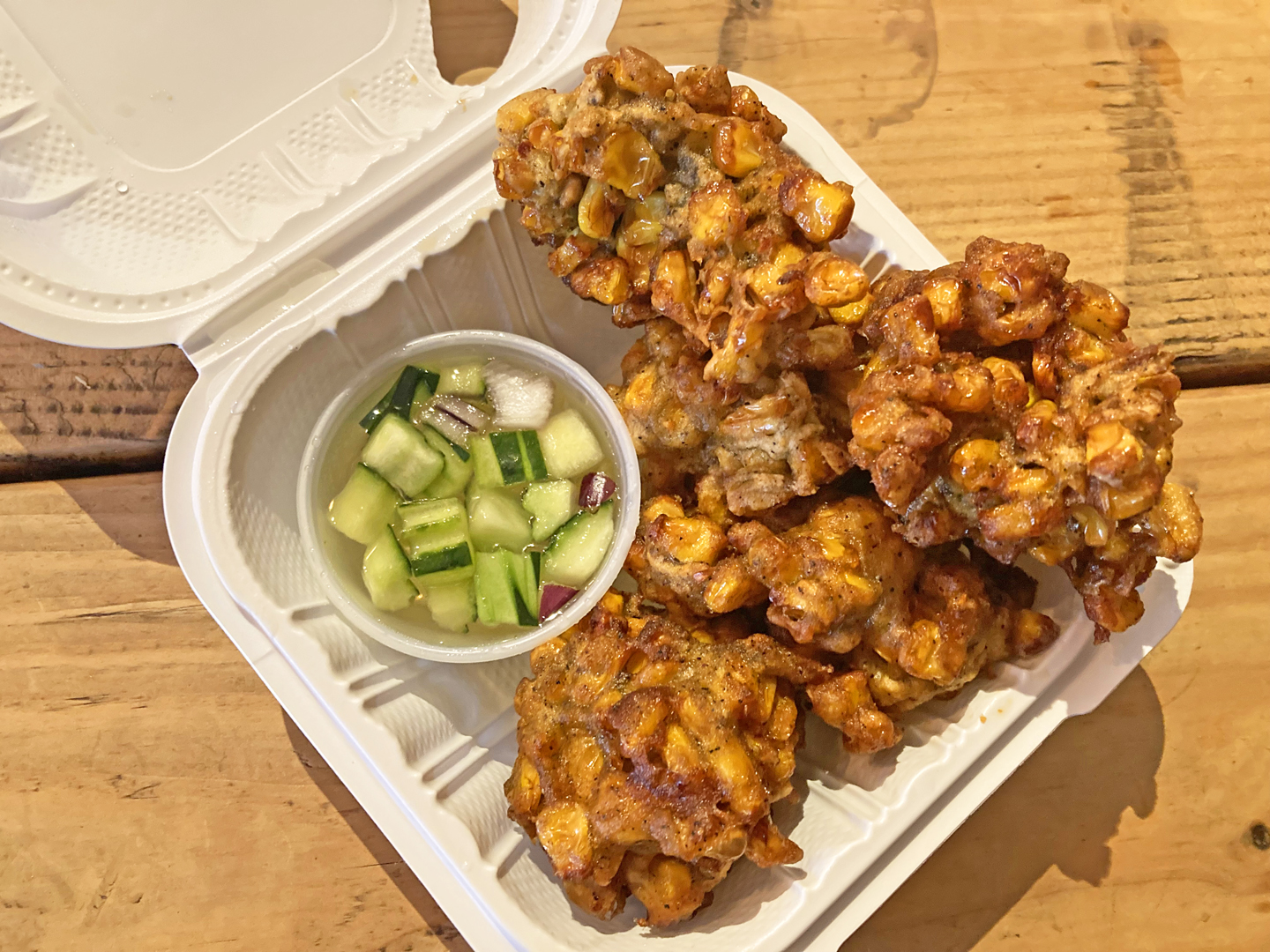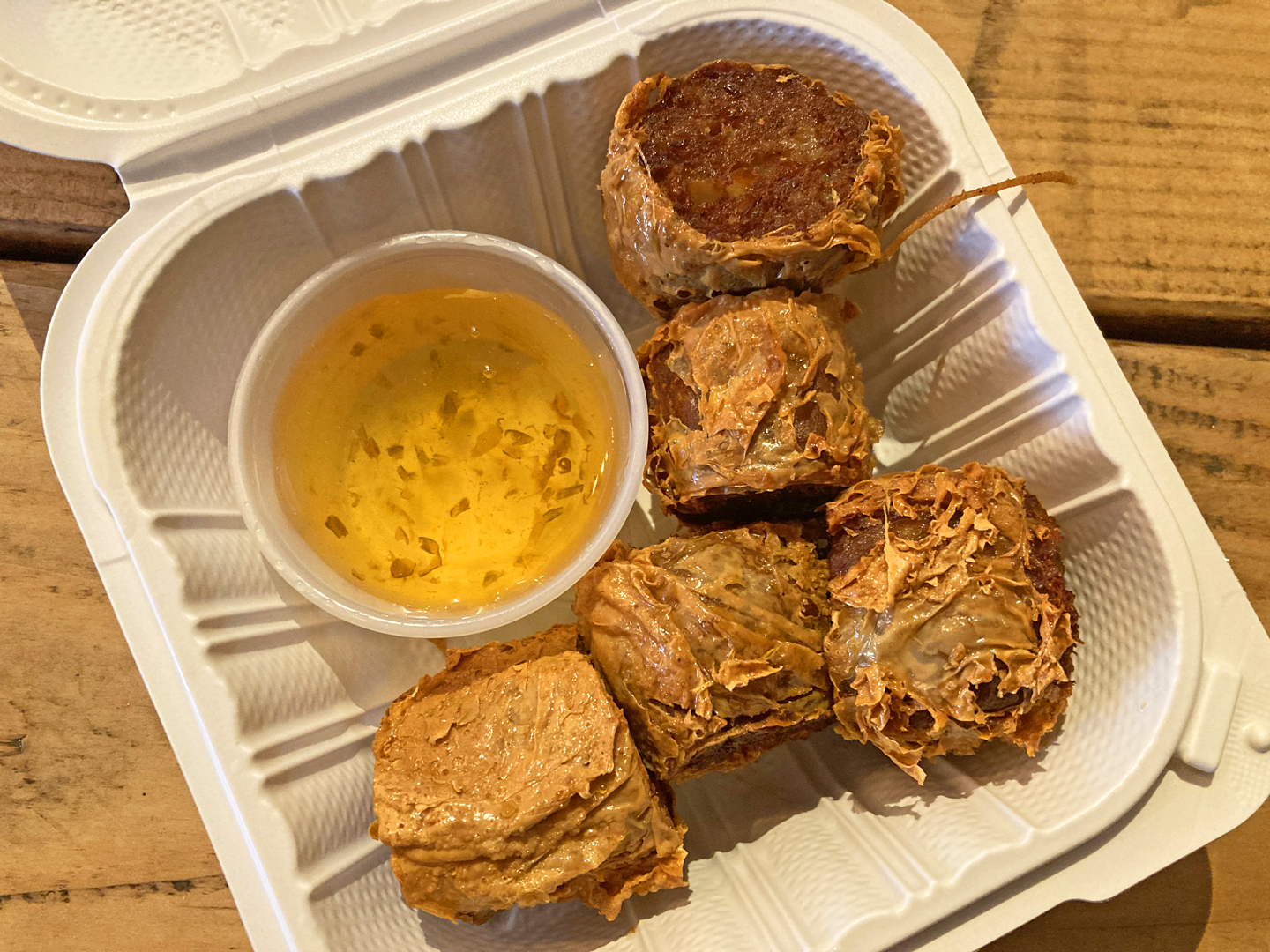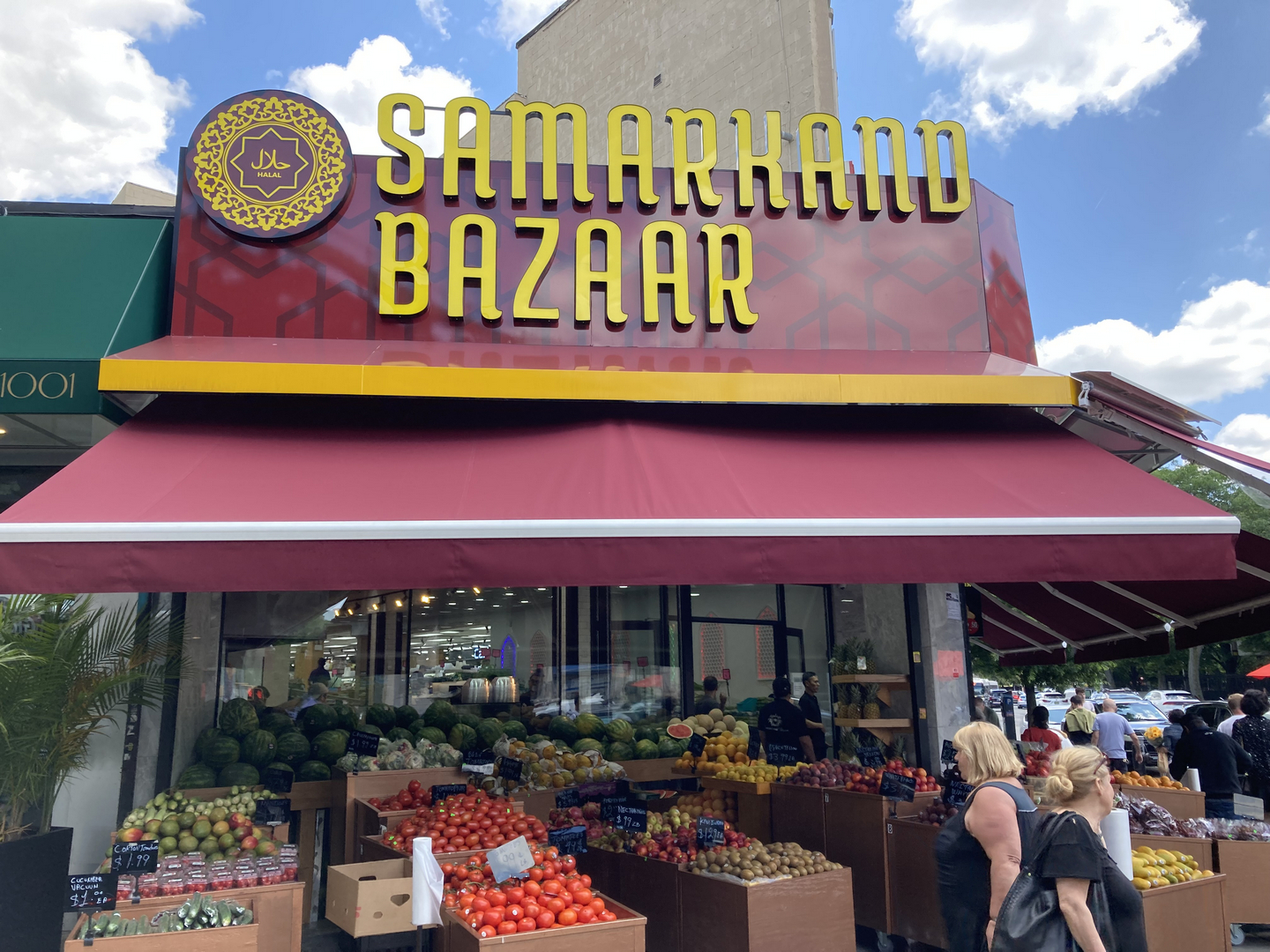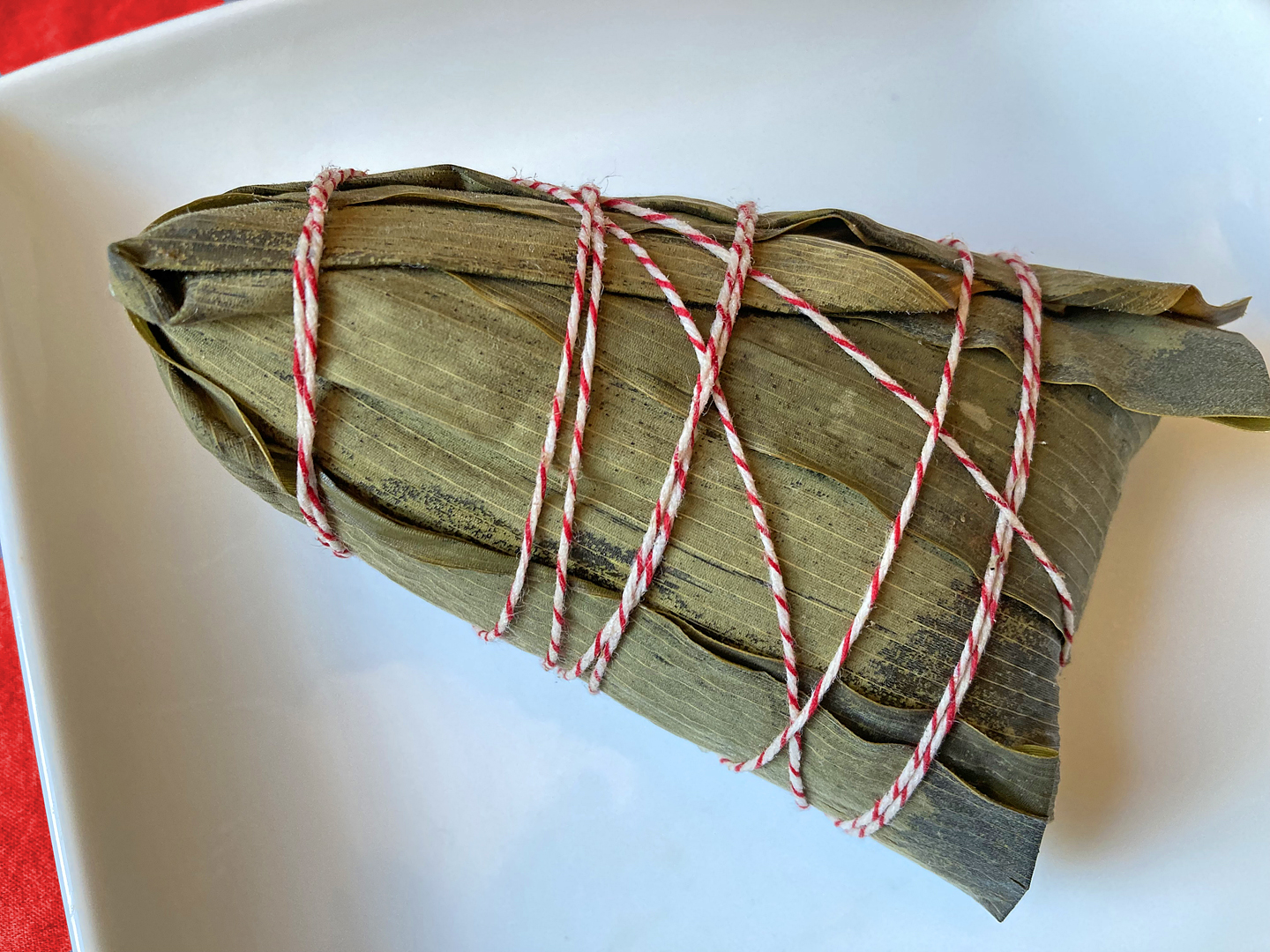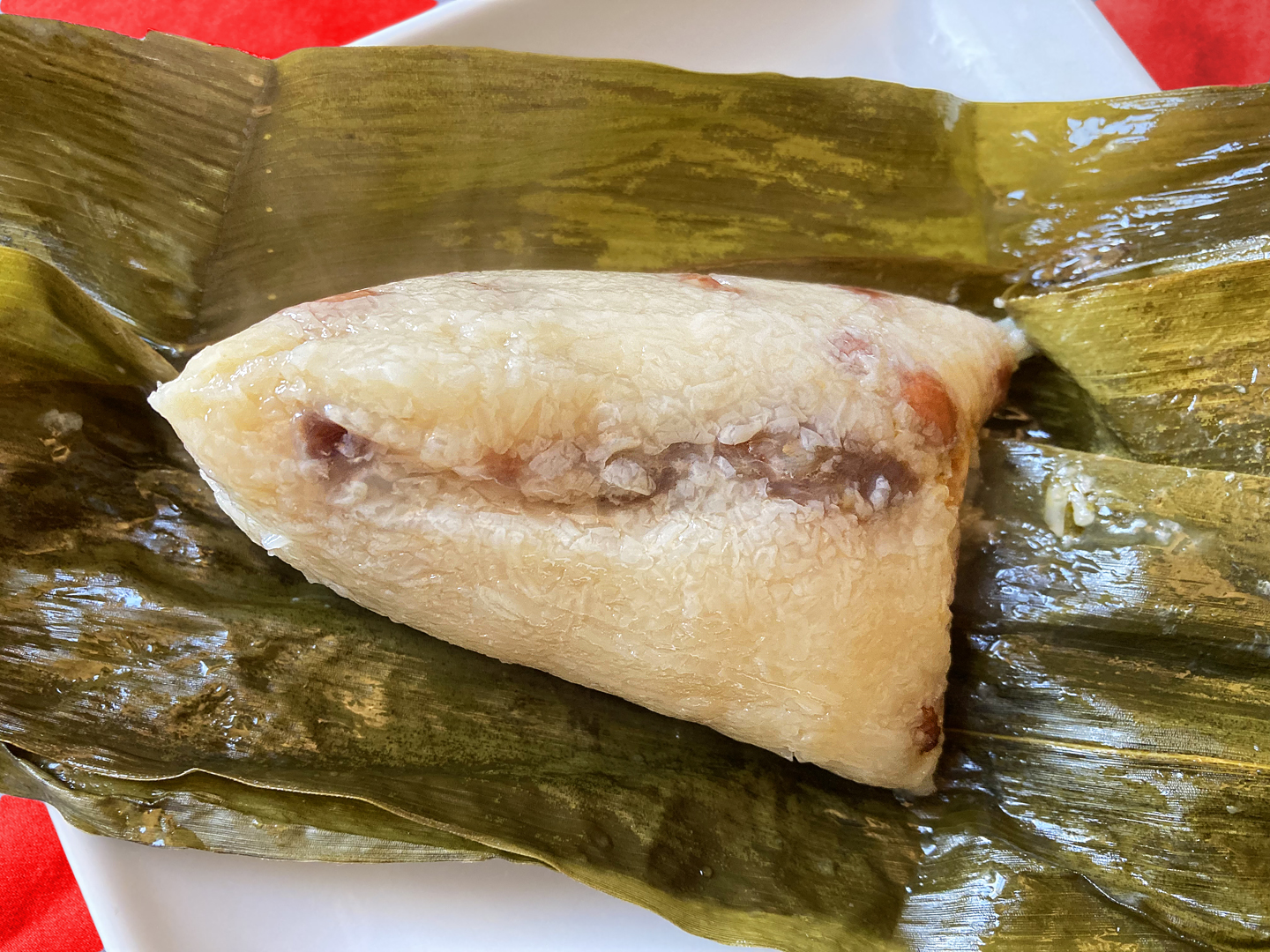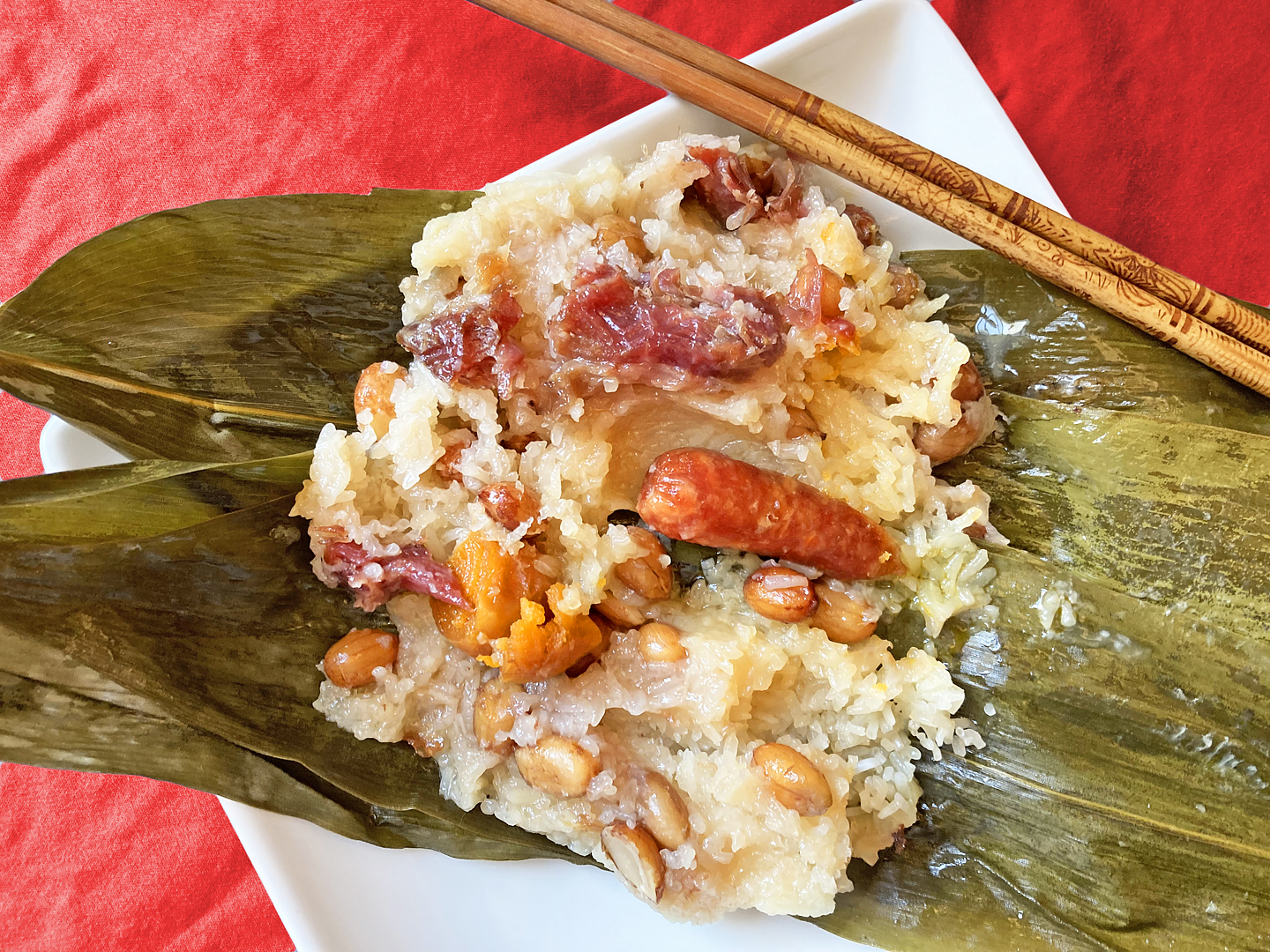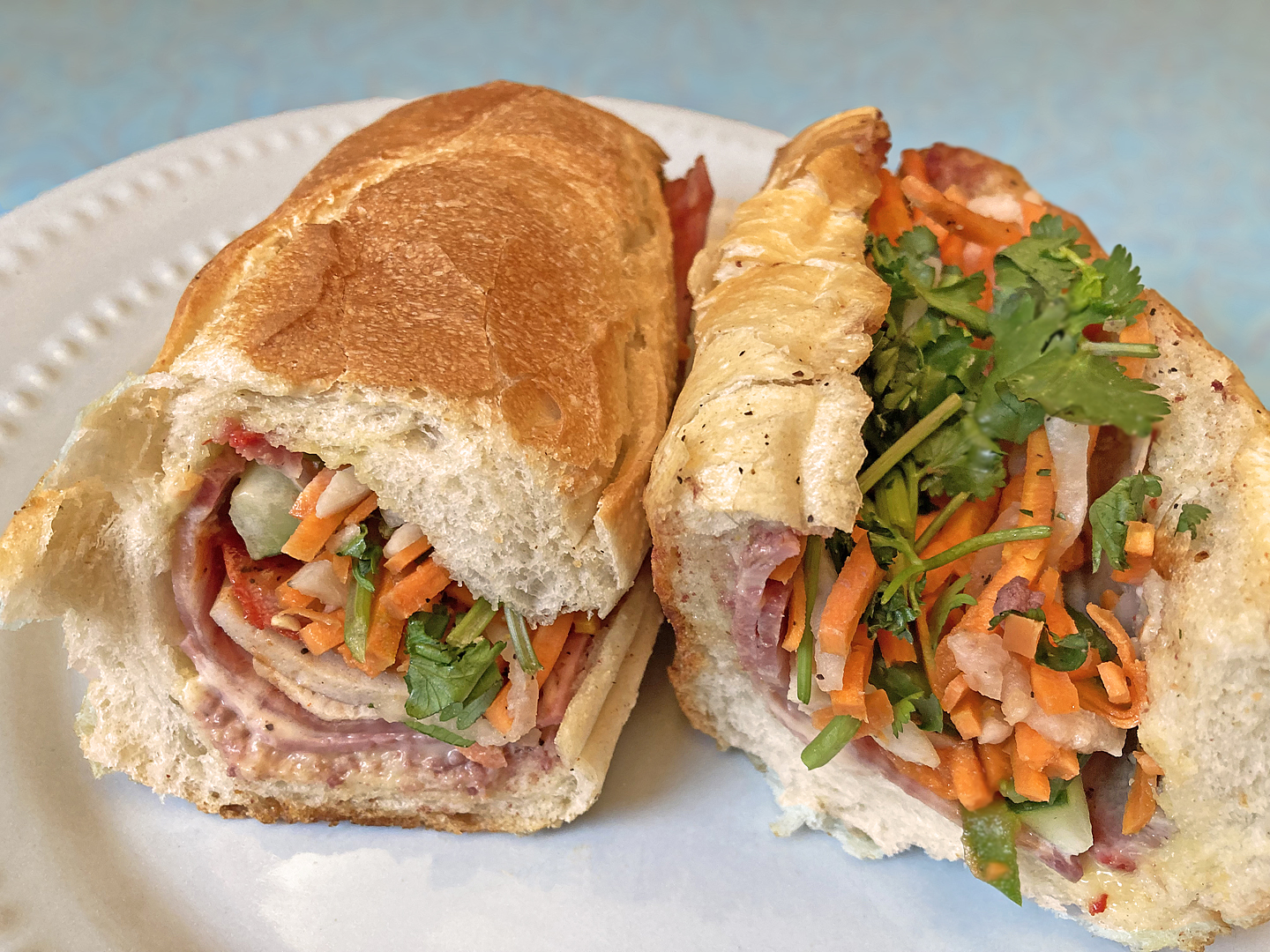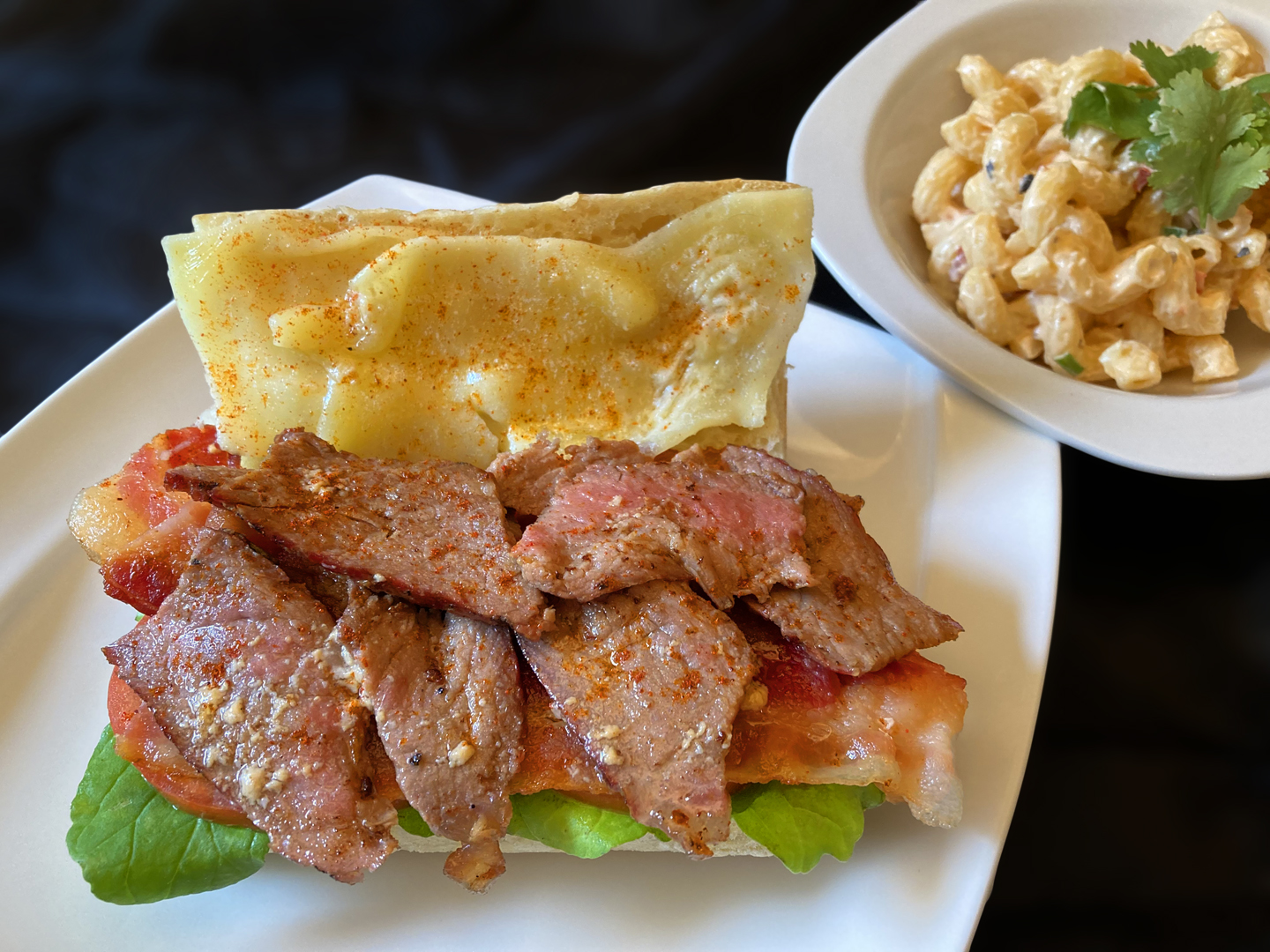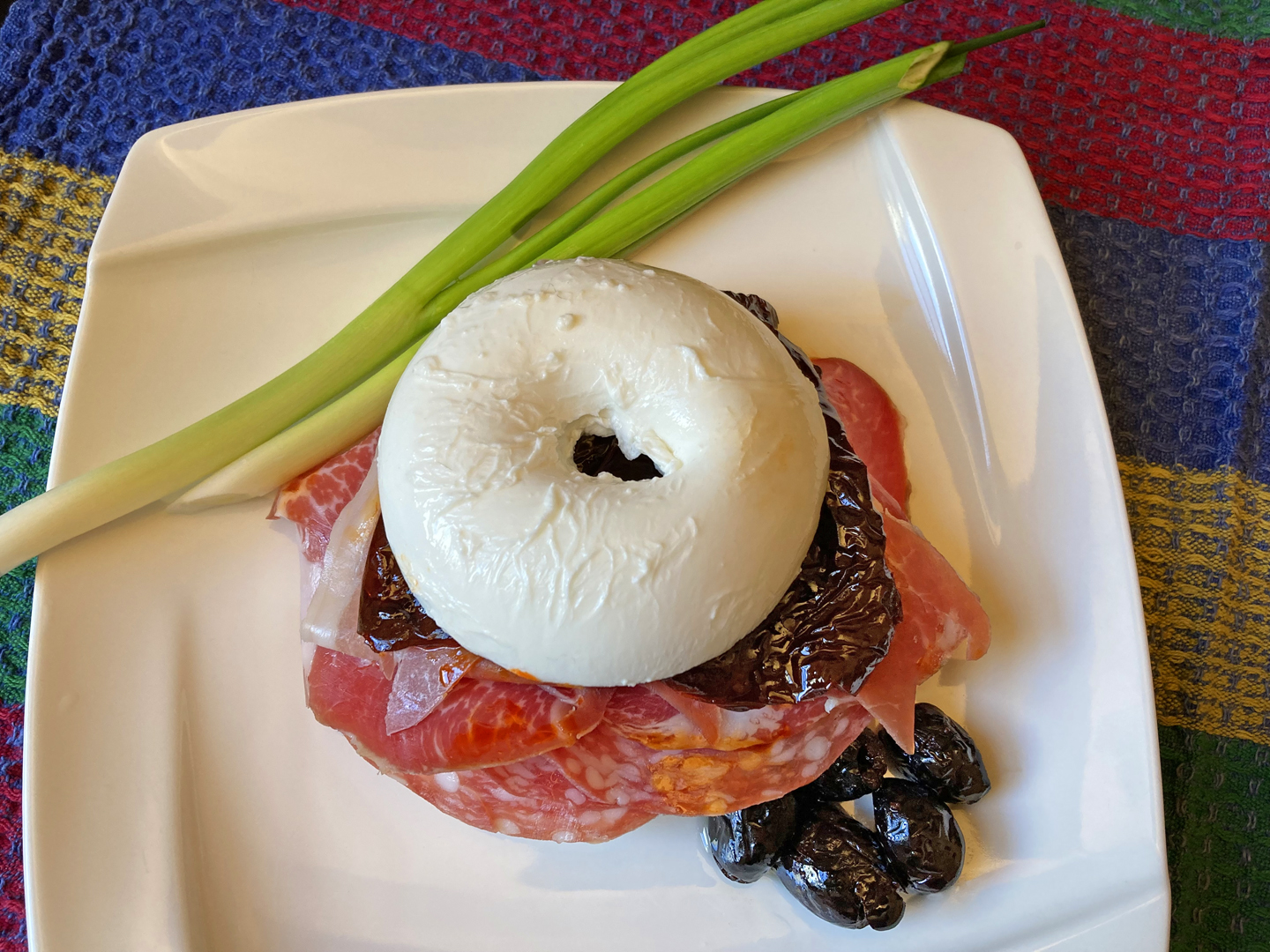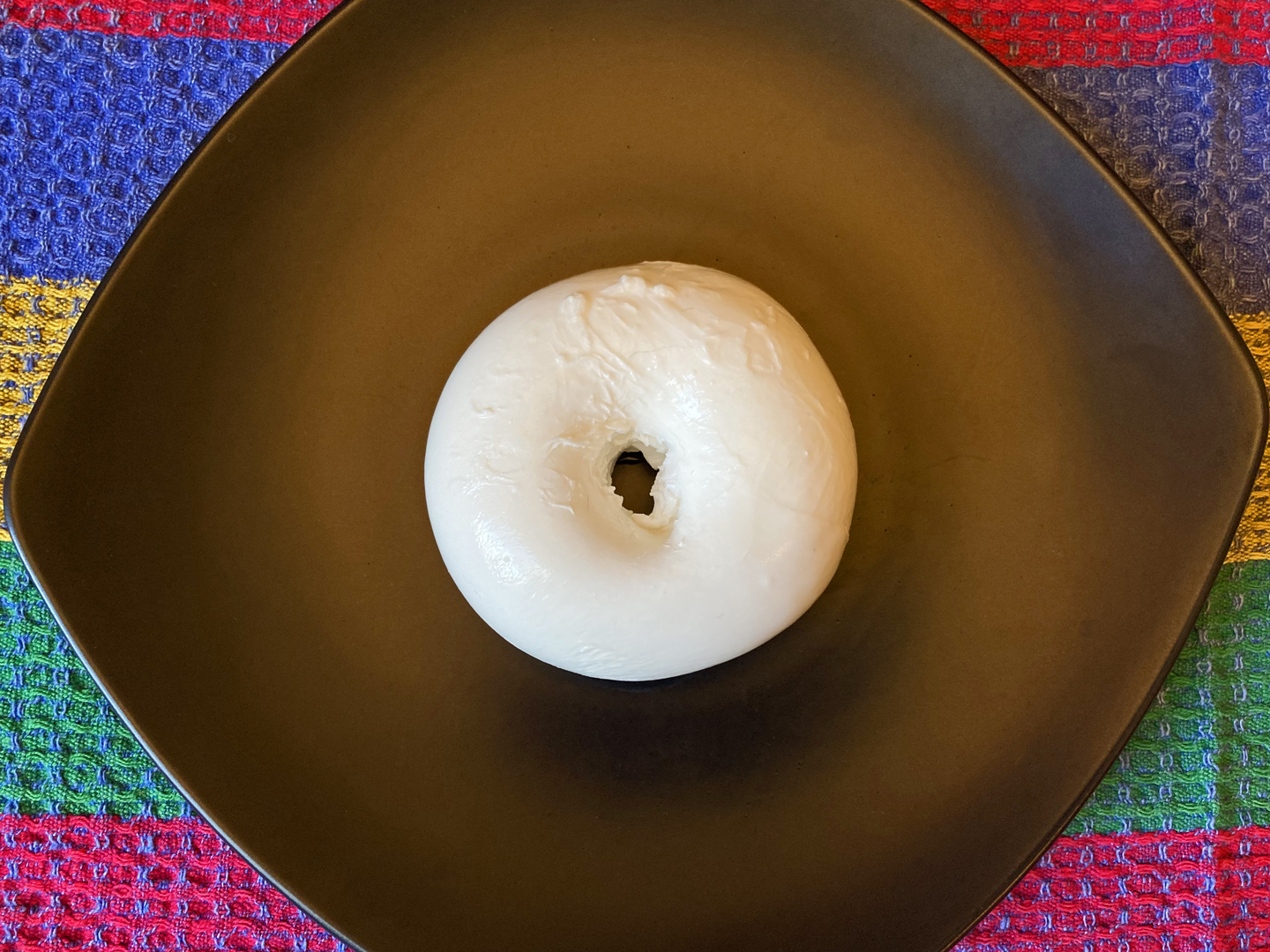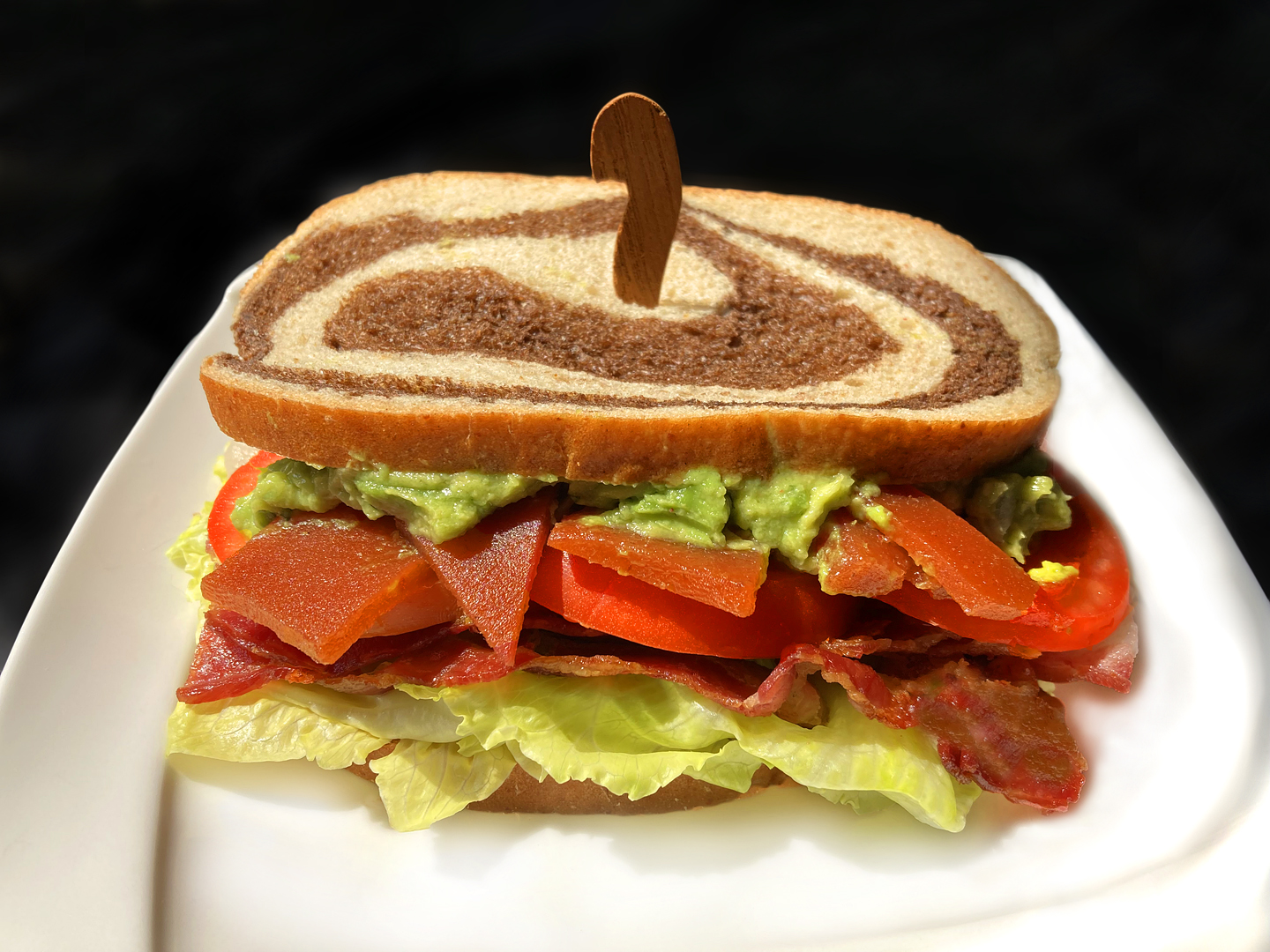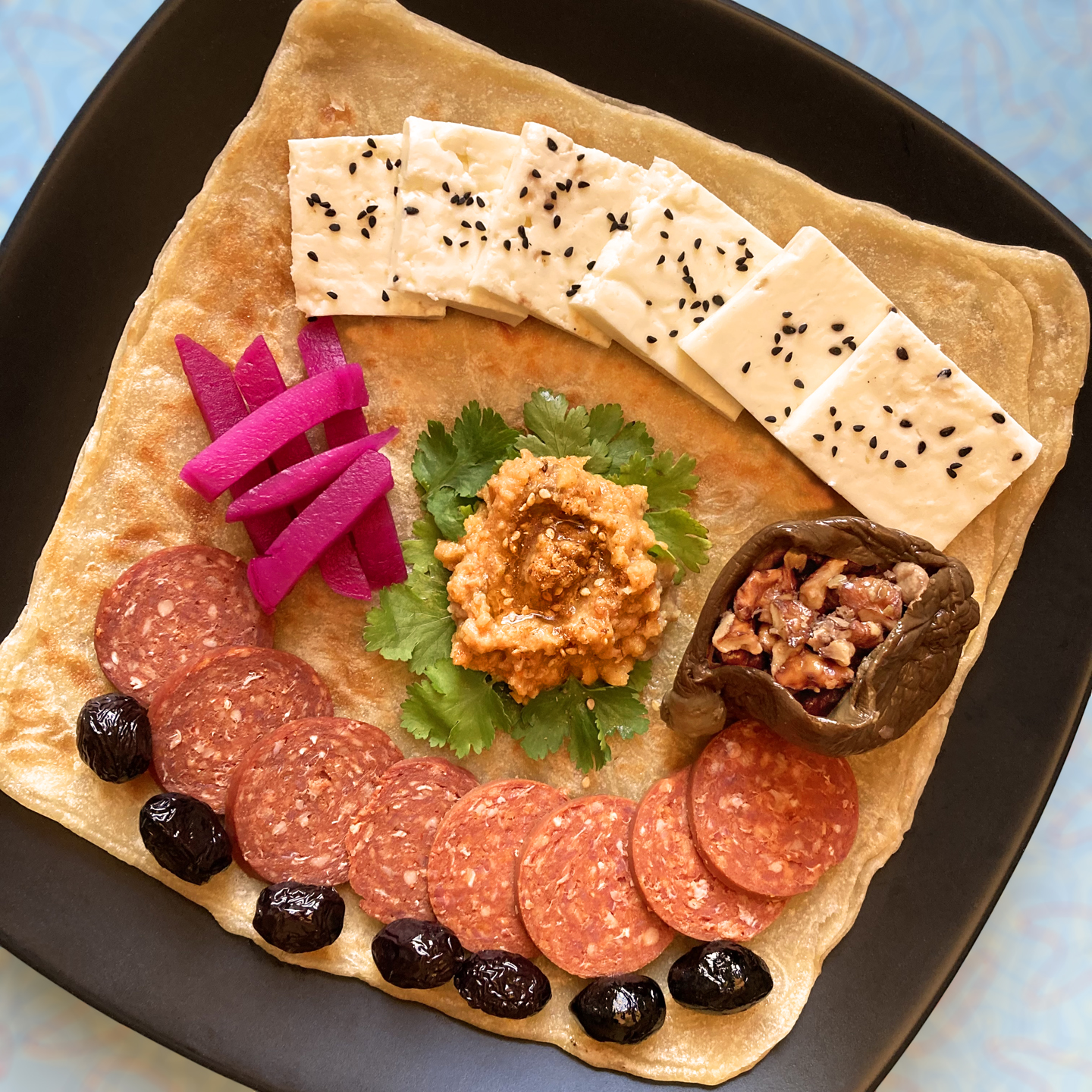(Click on any image to view it in high resolution.)
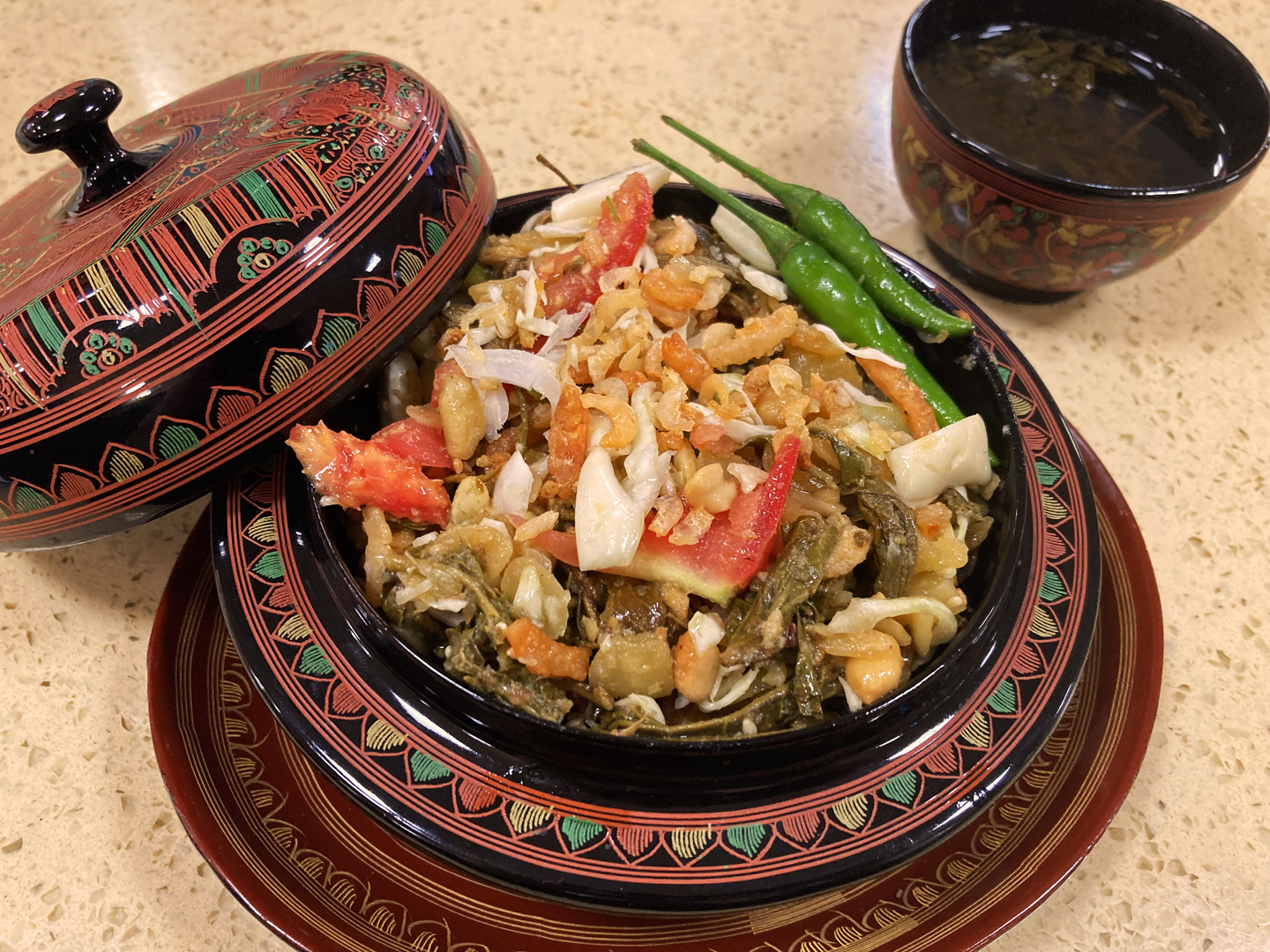
I don’t know precisely how many posts I’ve published on ethnojunkie.com; I stopped counting when I hit 1000. But I can tell you that the number of times I’ve suggested that you go somewhere and get something post-haste can probably be counted on the fingers of one hand.
This is one of those posts. The “somewhere” is Burmese Hut, a new stall in Elmhurst’s HK Food Court at 82-02 45th Ave (definitely not to be confused with its short-lived Burmese predecessor) and the “something” is their fantastic Laphet Thoke. Laphet is the Burmese word for pickled or fermented tea leaves and thoke means salad; in Myanmar, tea is not only drunk, but also consumed as food.
There’s no set ingredient list for laphet thoke, but there are four key elements: the tea leaves plus some other veggies like shredded cabbage and tomatoes; the add-ins like dried shrimp; the dressing, often garlic oil, lime juice and fish sauce; and the all-important “crunchies” – expect fried garlic and fried onion, fried broad beans and toasted soybeans plus peanuts and sesame seeds – all mixed together and garnished with green bird’s eye chilies and slices of fresh raw garlic. But basically the performance is entirely up to the chef.
And in this case, the chef is a virtuoso.
On last weekend’s Ethnic Eats in Elmhurst ethnojunket, my guests who had spent time in Southeast Asia were very familiar with the dish, having enjoyed it more than once. I like it so much that I spent years perfecting a recipe for it. And after all the experiences of their eating and my cooking, we concurred that this was absolutely the best, most outstanding version any of us had ever tasted.
Go there. Go there now. Order their spectacular Laphet Thoke. And tell them ethnojunkie sent you.

